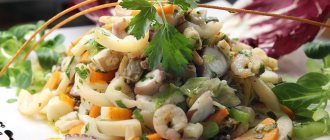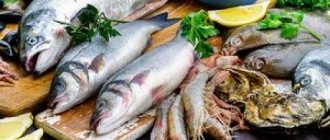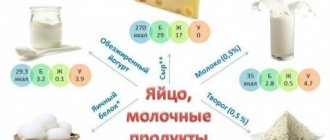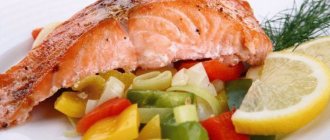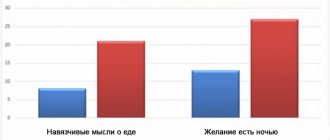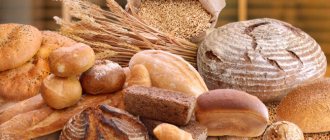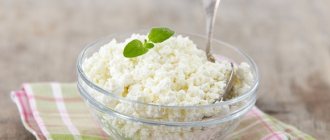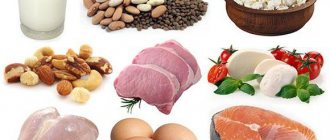Sports nutrition > Library > Shrimp - a valuable seafood product with a lot of protein
Once upon a time, shrimp were an exquisite delicacy that not many could afford. Fortunately, modern technologies for growing shrimp in special ponds have made this healthy delicacy more accessible. Already today, 1/3 of the shrimp sold worldwide comes from so-called shrimp aquaculture, with 75 percent of the market coming from China and Thailand and the remainder from Latin America and other countries.
Regarding the quality of shrimp, experts are unanimous in the opinion that of the two types - cold-water and warm-water (tiger shrimp, white shrimp) - shrimp that live in cold, deep waters have the best taste, and this applies to shrimp that live in both salty and in fresh waters. It is generally accepted that the best deep-sea shrimp live in the Norwegian fjords, as well as off the coast of Iceland, Greenland and Alaska. It should be noted that cold-water shrimp are much smaller than their tropical warm-water relatives, which still does not prevent their meat from being surprisingly tasty. Additionally, warm-water shrimp are most often farmed, while cold-water shrimp are wild-caught.
How many calories are in shrimp?
The average calorie content of boiled and fresh shrimp is almost the same; per 100 g it reaches 97 and 95 kcal, respectively. This amount of seafood contains 18.9 g of protein, 2.2 g of fat and no carbohydrates at all. In particular, this is their advantage when losing weight. For different varieties of crustaceans, the caloric content and nutrient content may vary slightly. The method of preparation is also important.

Shrimp calorie table (per 100 g)
| Product name | Calorie content, kcal |
| Shrimp peeled and fried | 116 |
| Boiled shrimp in shell and peeled | 95 |
| Boiled shrimp with shell and unpeeled | 87 |
| Boiled tiger prawns | 89 |
| Boiled King Prawns | 87 |
| Marinated shrimp | 60 |
Nutritional table for shrimp (100g)
| Product name | Fats, g | Proteins, g | Carbohydrates, g |
| Shrimp peeled and fried | 2,5 | 20,0 | 0,9 |
| Boiled shrimp in shell and peeled | 2,2 | 18,9 | 0,0 |
| Boiled shrimp with shell and unpeeled | 2,0 | 17,5 | 0,0 |
| Boiled tiger prawns | 0,5 | 19,0 | 0,0 |
| Boiled King Prawns | 1,2 | 18,2 | 0,8 |
| Marinated shrimp | 1,3 | 12,0 | 0,0 |
Is the cholesterol in shrimp bad for you?
Indeed, shrimp contain a large amount of dietary cholesterol. However, you should not exclude this valuable seafood from your diet because of this, since despite the high level of cholesterol, shrimp have low fat content. Additionally, on the issue of cholesterol, some studies have been conducted which have found that consuming shrimp increases bad cholesterol levels by 7 percent while increasing good cholesterol levels by 12 percent. Thus, the ratio of bad cholesterol to good cholesterol is such that the level of bad cholesterol is compensated by the production of more good cholesterol.
That is why in the case of shrimp, the well-known proverb that says “Everything is good in moderation” is suitable, so consuming a small amount of shrimp does not pose any harm to health, but on the contrary. Not to mention that cholesterol should enter the body in small quantities, since it takes part in many processes occurring in our body. Cholesterol, as a special type of fat, is part of cell membranes, ensuring their permeability, and in the composition of internal cellular structures. With its deficiency, cell function is impaired, which negatively affects metabolic processes.
In addition, the way you cook shrimp helps reduce the amount of bad cholesterol produced, which we will talk about later.
Composition and beneficial properties
After heat treatment, most of the valuable substances are retained in shrimp. This seafood contains:
- vitamins (PP, B, E);
- micro- and macroelements (calcium, chromium, fluorine and others);
- polyunsaturated fatty acids;
- protein that is quickly absorbed and necessary for the whole body.
Due to such a rich composition, shrimp are able to restore the activity of the nervous system, improve the functioning of the heart and blood vessels. There is a beneficial effect on the functions of the endocrine system. In this regard, shrimp are used as a prophylactic against various diseases. Since they rarely cause allergies, pediatricians allow them to be introduced into the diet of a child up to one year old. They will become an additional source of protein along with dairy and meat products.

Boiled shrimp contain an antioxidant that has a beneficial effect on the cardiovascular system. It can prevent the development of heart attack and stroke, relieve depression
Benefits of shrimp
The following beneficial properties of shrimp have been proven:
- due to its low calorie content, the product is indicated for weight loss and excess weight;
- shrimp are full of healthy proteins, which are necessary to strengthen muscles and maintain healthy skin;
- Shrimp B vitamins are good for nails, skeletal system, hair, heart, blood vessels;
- Vitamin C contained in shrimp enhances immune functions;
- A 100-gram serving of shrimp supplies the body with the daily requirement of iodine;
- Selenium and zinc from seafood stimulate male potency.
Negative effects on the body
In some cases, after eating shrimp, allergic reactions may occur, which manifest themselves in the form of rashes. Sometimes there are malfunctions in the functioning of the digestive organs. As a rule, side effects are possible in the case of individual intolerance to seafood protein by the human body.
Since fried shrimp contain a lot of cholesterol, it is not recommended to consume them in large quantities. They are especially contraindicated for gastrointestinal diseases in the acute stage, problems with heart function.

On a note! Unfortunately, the quality of products sold in modern stores is often questionable. This also applies to shrimp. They can also be grown using growth promoters, antibacterial drugs and hormonal agents. It is not recommended to consume such seafood. The benefits from them are much less than the harm.
How to choose the right shrimp?
The healthiest shrimp are fresh frozen, as in this case they retain maximum of their properties. But frozen boiled shrimp are most often found in stores. It is best to take shrimp in blocks.
The shrimp should look fresh and smell like the sea. There should be no stains on them. If there are rings on the legs or black spots, it means the shrimp is either spoiled or quite old. During cooking it will simply turn into mush. If there are yellow spots, it means that they tried to hide the black spots using chemical solutions.
Few can argue about the benefits of seafood, among which shrimp are not the least important. They not only have an affordable price, but also the necessary nutritional value for the body.
Shrimp for weight loss
When clarifying information about how much protein is contained in shrimp, it is worth noting the low calorie content of the product. This allows you to use shrimp if you want to lose weight.
What are the main advantages of seafood:
- They satisfy hunger well due to the high concentration of protein.
- Accelerate metabolic processes, which promotes weight loss.
- Optimize the functioning of the digestive system.
Read: Treatment of the disease: diet and consumption of prunes for pancreatitis
Against the backdrop of a meager, limited diet, shrimp help compensate for the deficiency of nutrients in the body. They contain many useful substances, and the concentration of iodine in them is 100 times higher than in beef.
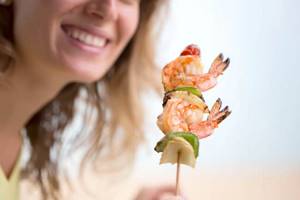
But do not overuse the product, it can lead to harmful consequences. Due to the high concentration of cholesterol, shrimp put a lot of stress on the liver.
Seafood is often included in the diet of women and men who want to lose weight. If a person suffers from obesity, it is recommended that he eat seafood at least 3 times a week.
Fried
Among people following a strict diet in the process of losing weight, fried shrimp are quite popular; they are also not very high in calories. For piquancy, but also of course for benefits, nutritionists advise adding mixtures of herbs and peppers, which will remove excess fat from the dish. This starts the digestion process very well and improves metabolism in the body.
BJU per 100 g:
Calorie content 115 kcal per 100 grams
- Protein 33 grams
- Fat 2.8 grams
- Carbohydrates 9 grams
The products are designed for six servings.
Cooking time 5 minutes. Cooking time 10 minutes. Ingredients:
- one kilogram of shrimp (king) without the shell;
- five cloves of garlic (finely chopped);
- 4 tablespoons olive oil;
- a bunch of cilantro (finely chopped);
- 1/2 teaspoon for each peppercorn: green, red and white;
- salt to taste.
Process for making fried shrimp:
- First, peppercorns: green, red and white, grind well in a wooden mortar for greater flavor.
- Second, place the shrimp in the prepared bowl, add salt to taste and add half of the above mixture of peppers, and mix the ingredients thoroughly. Let stand for 5 minutes so that the shrimp absorb the salt and aroma of the pepper mixture. Don’t forget to peel the unpeeled shrimp; we won’t use the shells in further cooking.
- Third, pour finely chopped garlic and the rest of the peppers crushed in a mortar into a hot frying pan with oil, stirring and frying for two minutes. Then place shrimp on top, stir and fry for 3-5 minutes. After this time, turn off the heat, sprinkle with finely chopped cilantro, stir and serve.
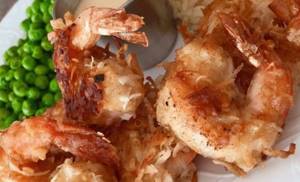
What to consider when choosing and purchasing shrimp
Before choosing shrimp, especially frozen ones, you need to pay attention to the country of delivery. The worst quality seafood comes from South Asia. Meanwhile, it is there that the largest variety – king prawns – is grown. The best quality is found in those mined off the coast of Latin America.
It so happens that crustaceans, which are also the most expensive, are not always large in size, but they are also of the highest quality. Often unsightly and pale shrimp are more useful, since they are less often pumped with various dyes. Therefore, if they have a dim color and small size, then give preference to them. Such shrimp are called cold-blooded and are found in Norway, Canada, Denmark and the Far East.
How to choose shrimp? Follow a few guidelines:
- look at the date and place of production;
- check if there are dark spots on the paws - this is evidence that the product has been stored for too long and has already begun to deteriorate;
- Avoid purchasing crustaceans that have bumps or yellow spots on their shells. This is what seafood that has undergone chemical processing looks like; there is little useful in it;
- white spots indicate that the product was frozen very hard and for a long time, which definitely did not do it any good.
Unpeeled shrimp will be juicier and retain more beneficial properties than peeled shrimp, since the meat will be protected by the shell during cooking.
Should you eat shrimp in brine?
Marinade is harmful for several reasons; it contains a lot of salt and spices that can cause serious harm to the body, especially if consumed systematically.
Shrimp in brine is not dangerous to the body if you initially drain the marinade and do not eat it. The seafood itself does not change the characteristics. Except for the increase in sodium concentration.
This product can be eaten, but you will have to adhere to the following rules:
- Shrimp in brine goes well with vegetables, but the side dish should not be salted.
- It is not recommended to regularly consume such foods.
Dietary shrimp recipes
Let's look at a few dishes whose recipes are simple and yet healthy:
| Salad with seafood and vegetables: | You will have to chop the Chinese cabbage, cut the cucumbers into half rings, add the tomatoes, cut the hard cheese into cubes. Add greens to the bowl, a few grams of boiled and peeled shrimp. You can grind them. Season the salad with olive oil, add salt and pepper to taste. |
| Rice with seaweed and shrimp: | Boil the rice without adding salt; it is better to use steamed or brown rice. Prepare seafood and mix it with kelp. You can use asparagus instead of seaweed. Rice serves as a side dish, complemented by shrimp and kelp. |
| Salad with eggs and potatoes: | Boil small potatoes and sawn eggs. Then cook the shrimp. Chop the herbs (dill, parsley, basil). Mix all the ingredients, first cutting the potatoes into cubes and the eggs in half. Take lemon juice and olive oil and use the mixture to season the dish. |
It is not so important how much protein shrimp contain, since this product has a unique composition. It will not only help cope with an attack of hunger, “saturate” the body with useful substances, but also improve a person’s health. But you should not overuse seafood, as this can lead to undesirable consequences.
Recommended video:
Read along with this article:
- Is it possible for a nursing mother to boil a boiled egg - the benefits of the product and possible harm
- How to eat sprouted wheat and how it is beneficial for…
- Foods containing large amounts of protein: benefits for the body
- The ABC of taste: calorie content of smoked capelin
- Goji berries - calories, beneficial properties
- Beneficial properties of capelin and its calorie content
- Do sunflower and pumpkin seeds make you better?
- Red beans: beneficial properties and cooking recommendations
- Beneficial properties of hemp and its effect on the gastrointestinal tract
Nutritional and energy value
The calorie content of 100 grams of boiled peeled and unpeeled shrimp ranges from 80 to 115 kcal, it all depends on the type of seafood. Boiled king and tiger shrimps in the shell have almost the same amount of calories, which is 87 kcal per hundred grams. Fried ones are higher in calories, this figure ranges from 115 to 150 kcal, it all depends on the oil that was used to prepare the dish.
The raw product contains 73-107 kcal, shrimp baked in sauce contains from 170 to 180 kcal, and if they are cooked in batter, the calorie content is 240-250 units. BZHU and KBZHU of the boiled product is such that proteins are 21.32%, fats are 1.92%, and carbohydrates are 0.47%.
Shrimp is one of the most consumed types of seafood in the world.
This is a versatile product that can be prepared in a variety of ways. It is a rich source of vitamins and minerals. When a person is on a diet, he tries to select his diet efficiently. Shrimp is a food rich in proteins, microelements and vitamins; they can compensate for the refusal of most other foods.
Besides being low in calories, shrimp is rich in protein, which is effective in weight management. A person, by increasing their protein intake, not only reduces the total number of calories in the diet, but also increases metabolism. Any food consists of proteins, carbohydrates and fats. These substances and their ratios are the main reason why some foods contain more calories. Proteins and carbohydrates provide 4 calories per gram, while fats provide 9 calories.
When it comes to weight management, calorie balance is very important. Eating high-calorie foods will lead to weight gain, as the excess will begin to be stored as fat on the body. If a person requires 2000 calories a day, then at 3000 one thousand of them will be deposited on the sides and thighs. Conversely, a calorie deficit leads to weight loss because the body is forced to use its fat reserves as an energy source.
